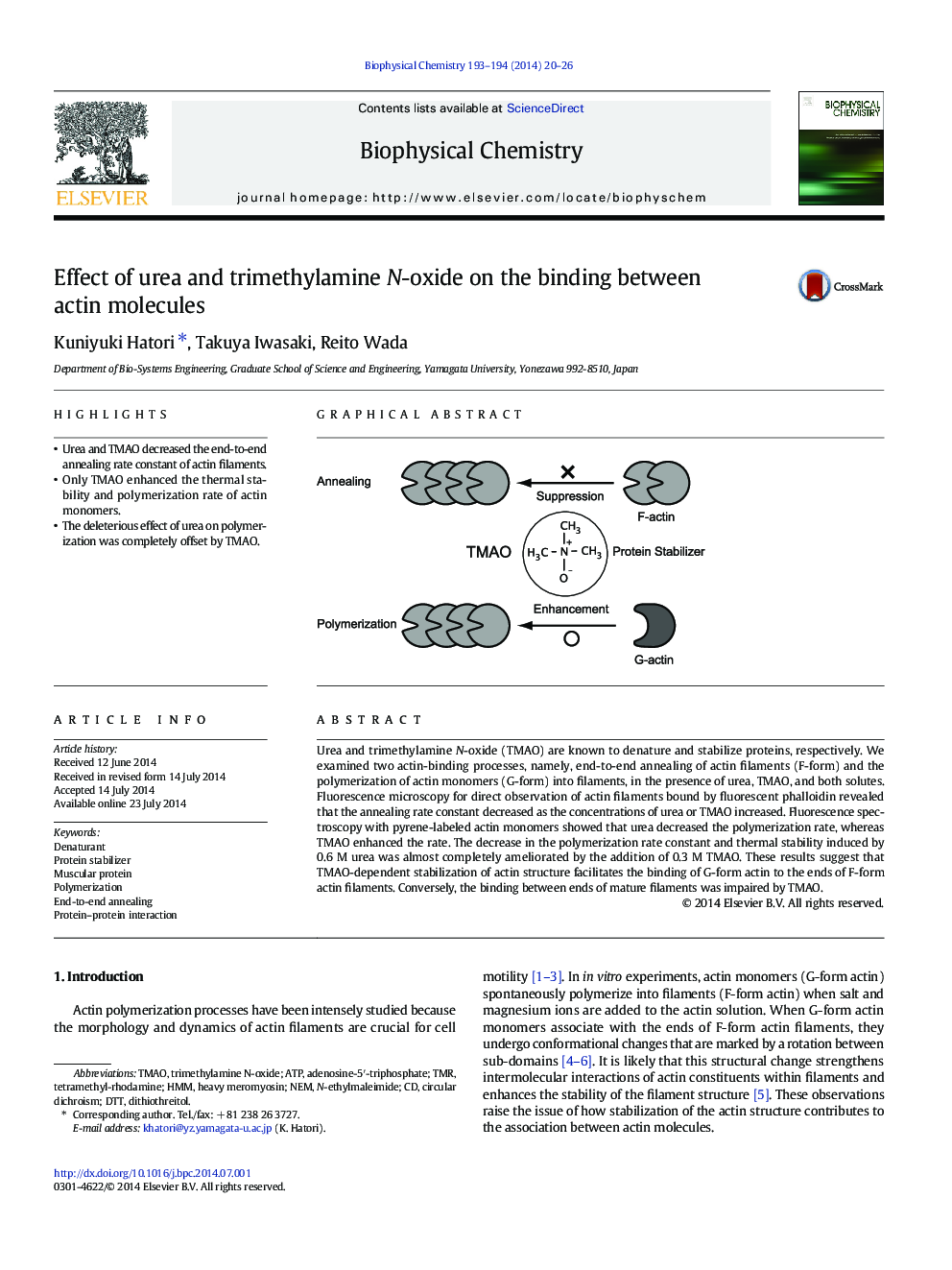| Article ID | Journal | Published Year | Pages | File Type |
|---|---|---|---|---|
| 5370985 | Biophysical Chemistry | 2014 | 7 Pages |
â¢Urea and TMAO decreased the end-to-end annealing rate constant of actin filaments.â¢Only TMAO enhanced the thermal stability and polymerization rate of actin monomers.â¢The deleterious effect of urea on polymerization was completely offset by TMAO.
Urea and trimethylamine N-oxide (TMAO) are known to denature and stabilize proteins, respectively. We examined two actin-binding processes, namely, end-to-end annealing of actin filaments (F-form) and the polymerization of actin monomers (G-form) into filaments, in the presence of urea, TMAO, and both solutes. Fluorescence microscopy for direct observation of actin filaments bound by fluorescent phalloidin revealed that the annealing rate constant decreased as the concentrations of urea or TMAO increased. Fluorescence spectroscopy with pyrene-labeled actin monomers showed that urea decreased the polymerization rate, whereas TMAO enhanced the rate. The decrease in the polymerization rate constant and thermal stability induced by 0.6Â M urea was almost completely ameliorated by the addition of 0.3Â M TMAO. These results suggest that TMAO-dependent stabilization of actin structure facilitates the binding of G-form actin to the ends of F-form actin filaments. Conversely, the binding between ends of mature filaments was impaired by TMAO.
Graphical abstractDownload full-size image
